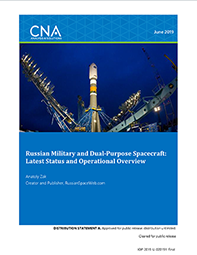In the decade following the breakup of the Soviet Union, the Russian military faced dwindling budgets and decaying equipment, severe mismanagement, and rampant corruption. To a Western observer, the bloody conflict in Chechnya in the 1990s and the humiliating tragedy of the submarine Kursk in 2000 served as vivid illustrations of the Russian military in crisis.
Yet, during the first decade of the 21st century, the Kremlin, benefiting from a windfall in oil revenues, began investing increasingly large sums of money and effort into modernizing its military and reestablishing Russia as a significant military power on the world’s stage. The process of Russia’s military buildup started mostly under the radar of the general public in the West, until it exploded in the headlines with the Russian invasion of Georgia in 2008. Even then, there was a mixed picture of the Russian “victory,” with reports of poor discipline, bad communications, and friendly fire within the Russian units.
Still, Moscow continued boosting military spending and the reform of its armed forces. In May 2012, Russian president Vladimir Putin signed a decree on the modernization of the Russian Army, which the Ministry of Defense began implementing as part of its Plan of Activities Through 2020.
In 2014, the world saw the Russian Army’s new face, when its special operations units launched the annexation of Crimea, followed by Russia’s proxy war in Eastern Ukraine. In the following year, the Kremlin surprised the West again with its Syrian campaign, which was universally credited with turning the tide of the country’s civil war in favor of the regime in Damascus, previously written off as dead.
For the Russian government, these unconventional conflicts were the first ones to take place in the new four-dimensional theater of action, where traditional battlefields on land, sea, and air were increasingly complemented by a space component. Satellites now played a major role in reconnaissance, communications, and navigation. And, in addition to their role in the “hot” ongoing conflicts, dedicated space assets were necessary for Russia’s strategic military activities, such as building up its ICBM force, expanding into the Arctic, modernizing its navy, and rebuilding its early warning system to alert the leadership of impending missile attacks.
In turn, the growing importance of spacecraft in military operations triggered the renewed Russian interest in space-based weapons and potential orbital warfare, as more and more countries were entering or expanding their presence in the once-exclusive club of space nations capable of launching indigenously built rockets from their own territories and independently delivering their own satellites into orbit.
Obviously, Russia increasingly viewed the United States to be its biggest threat in space, as the overall relationship between the two countries was slowly deteriorating during the 2000s. Authors of a book on military space published in 2008 offered the following rationale for the Russian military space strategy:
Taking into the account that the USA is partnering with Russia selectively, based exclusively on their own interests, it is possible to conclude that their actions in space exploration require adequate steps from the Russian Federation. The multi-year experience of the arms race teaches that the United States discuss agreements only with a strong partner, who can put up a respectable defense. For our country, there are only two ways: either to become a secondary space power or choose a strategy of retaining and building up of space potential (scientific, technical, defensive).
Download reportDistribution is unlimited. Public Release. 6/5/2019
Details
- Pages: 46
- Document Number: IOP-2019-U-020191-Final
- Publication Date: 6/5/2019
